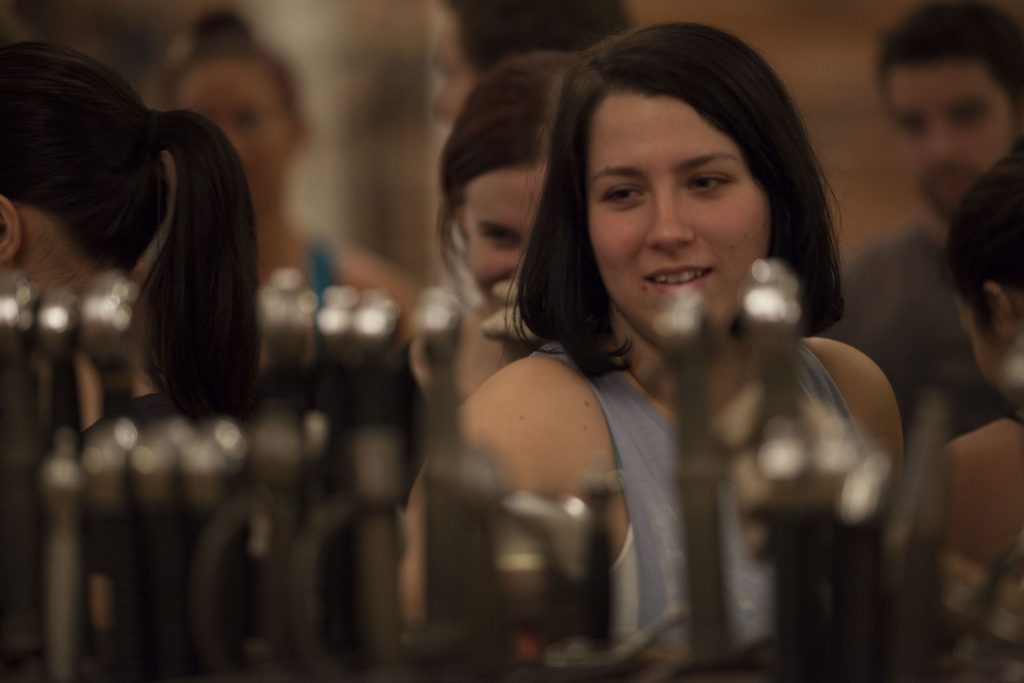Being safety-minded is a valuable trait in stage combat. However, shying away from choreography itself will only cause delays and disruption of the rehearsal process. Choosing to hold back and only perform slowly will certainly be safe and more comfortable for you, but will diminish the show you’re producing.
All fight directors want you to be injury-free and safe in your performance. Safety methods are built into the movements you’re taught. No performer is expected to risk themselves for the sake of the show.
So a fight choreographer will ask you to understand how the fight move is safe, and to give it a try. The more you repeat the choreography, the more at ease you’ll feel, and the faster you can perform it.
Give it a try.
Advice to the Actor
Bart Simpson said: “I can’t promise to try. But I’ll try to try.”
But Yoda said: “Do or do not. There is no try.”
Always refuse unsafe work. It is not an actor’s job to put themselves in harm’s way. You’re not a firefighter.
However, it’s the job of your fight choreographer to keep you safe. So if you take their direction, you’ll do fine.
The first step is to ask the director or choreographer how your safety is ensured. “Luck” is not an option. Relying on your partner to only strike you lightly is also not a good idea. But your level of comfort is a personal calculation. You may have been previously injured, and have a legitimate concern over a part of your body you don’t want to re-injure. Let them know if you have a specific concern.
Legally, you may be unable to sue if you’re in a stage fight because of a voluntary assumption of risk. In other words, you consented to do the choreography with the understanding that it’s a risky job and you might get hurt. On the other hand, if you’re working in a professional environment, you won’t have to sue because you’re covered under Worker’s Compensation (or your state’s equivalent) for injuries sustained in the performance of your job.
When you hear about people getting hurt on set, it’s often for two reasons:
- there was no fight choreographer, or
- the performers were improvising without the supervision of the fight director
As long as you’re following the direction of your (preferably FDC-certified) fight director or fight captain, you should have nothing to worry about.
The Fight Rehearsal
Your fight director will give you good safety equipment or show you the safe movement or both. If you’re unsure, ask questions. Ask them to do it slowly so you understand. Then give it a try.
Always start with slow motion. Both you and your partner need time to think and observe while the motion is happening. Some people have different ideas about how slow you should start. When in doubt, go even slower.
Pay attention to your partner’s feedback and especially to the fight director’s notes. They are sometimes to make the effect better, but often for your safety.
When you can perform one action perfectly, increase the speed a little bit. Keep challenging yourself to perform it faster and faster, but slow down once you start making mistakes.
What Are Reasonable Concerns?
Remember that there are many people who may be at risk in an action scene.
- Yourself: falling, twisting an ankle, repeatedly snapping your neck in reaction to a punch
- Your partner: striking them, pushing or pulling them when they don’t expect it, making them back up into an obstacle or over a precipice
- Other actors in the scene: you may not be alone in the scene, so don’t swing a weapon where you can’t see
- Crew and/or audience: When shooting a film scene, there may be a boom-mic operator directly behind you, or a steady cam operator in your face. In a live performance, you may be near the audience, and you never know when they’ll stretch their legs.
- Everyone in the area: Loud noises, such as a blank-firing gun or whip cracks, will affect everyone. So will airborne effects such as smoke. Shows that use such effects usually post signs.
If you observe that your partner is not following the choreographed move and you feel that it is dangerous, talk to your fight director after clearly telling your partner that you’re feeling unsafe. Don’t make it about correcting their behaviour, make it about your understanding of the safety of the move. It’s the job of the fight director to correct their behaviour.
Are you Uncoordinated?
Too often, I work with actors who think it’s an excuse to say: “Sorry, I’m just not very coordinated,” expecting to be forgiven for poor performance. Coordination is a skill that takes work, and is part of the actor’s job. What they’re really saying is, “Sorry, I’m not very good at my job, and I haven’t put the work into my training to meet minimal standards.”
Dancing is difficult, but you can choose not to audition for a role that requires dancing. Stage combat is even more difficult because it’s a partner dance with fast-moving weapons. If you haven’t put in the training time, or you know you’re generally uncoordinated, then you should choose not to audition for those parts as well.
But if you want to be an awesome action-hero, then you can enhance your general coordination with frequent practice and getting comfortable with the safe practices of stage combat.
Our next FDC Basic certification course is a three-week course, running Sundays through Fridays in the afternoon, 1-5pm. It starts January 10 and the exam is on January 29. You can register online or by calling or visiting our Vancouver location during store hours.
